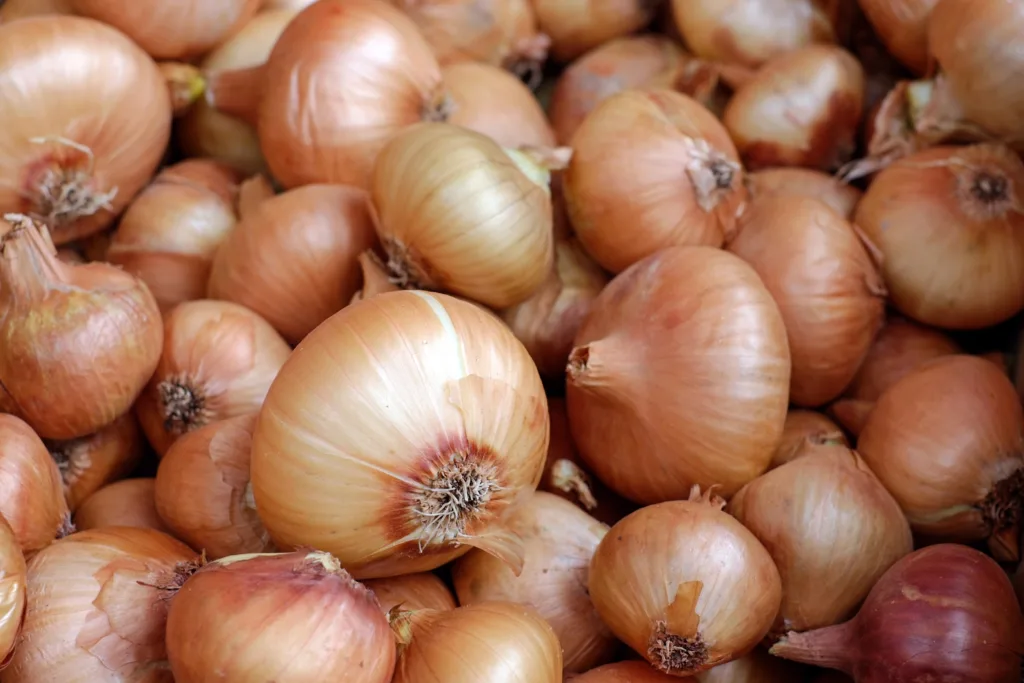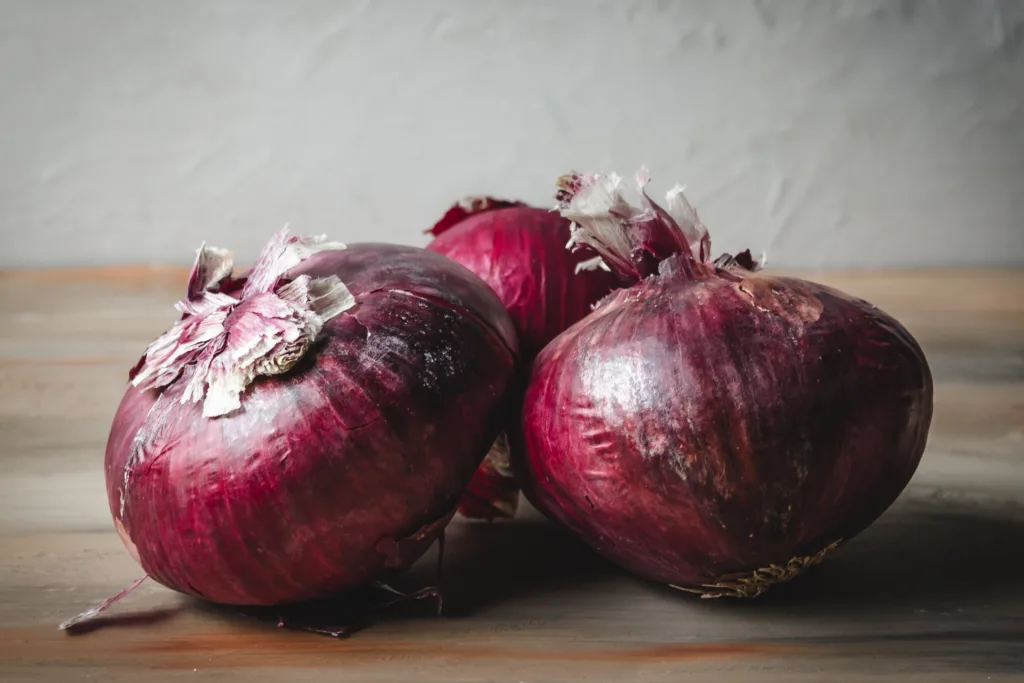Onions are a staple ingredient in many cuisines around the world. They are commonly used in soups, stews, sauces, and salads, among other dishes. However, sometimes you may encounter a slimy onion bulb, which can be concerning. In this article, we will discuss the causes of slimy onions and whether they are safe to eat.
A slimy onion bulb is an indication of spoilage. Spoilage can occur due to the growth of microorganisms, such as bacteria or fungi, on the onion. These microorganisms can enter the onion bulb through the neck of the plant, where the leaves attach to the bulb. Once inside, they can feed on the onion’s flesh, causing it to become slimy and mushy.
Farmers refer to this condition as “slippery skin,” as the inner part of the onion bulb can be easily slipped out by squeezing the bulb near its base. The affected area of the onion will feel soft and slimy, and it will be much different from the rest of the onion. If you notice these signs, it’s best to discard the slimy onion bulb and not use it in any recipe.
However, not all slimy onions are a sign of spoilage. Physically, slime is a type of gel, and it can occur naturally in some onions. The release of liquid stored inside the onion combines with natural sugars and starches, resulting in a slimy texture. Some onions may release a more watery liquid, while others may release a white and opaque liquid.
As long as the slimy onion is not of bacterial origin, it is safe to eat. If you cut open the onion and find that the slime is clear and odorless, then it’s likely that the onion is still good to eat. However, if the slime is discolored or has a foul odor, then it’s best to discard the onion.
A slimy onion can be a sign of spoilage, but it can also occur naturally in some onions. If you’re unsure whether the slimy onion is safe to eat, it’s best to err on the side of caution and discard it. Always inspect your onions before use to avoid any potential health risks.
What Makes Onions Slimy?
Onions can become slimy due to spoilage microorganisms that break down the firm cell structure of the onion. This results in a soft, slimy patch on the onion that is easily recognizable. The spoilage microorganisms eat away at the onion, leaving it mushy and slimy. It is important to note that this can happen when the onion is not stored properly or is past its prime. When an onion is spoiled in this manner, it is no longer safe to eat and should be discarded. To avoid this, onions should be stored in a cool, dry place and used before they become overly soft or show any signs of spoilage. onions become slimy due to the breakdown of cell structure caused by spoilage microorganisms, whih can be prevented by proper storage and timely use.

Why Is Onion Slippery?
Onion slipperiness is a disorder that occurs due to the infection of a fungus or bacterium in the onion bulb through its neck. The iner part of the onion bulb can easily slip out by squeezing the bulb near its base, which is why it is called slippery skin. This disorder is a common problem faced by farmers. The fungus or bacterium enters the onion bulb through the neck of the plant, leading to the onion’s slipperiness. The slipperiness of the onion makes it difficult to handle and can be a source of frustration for farmers. To prevent this disorder, it is essential to maintain good agricultural practices that involve proper crop rotation, weed control, and timely harvesting. Additionally, it is crucial to store the onions in a dry and cool place to prevent any fungal or bacterial growth.
Can Slimy Green Onions Make You Sick?
Slime on green onions is a natural occurrence and it is not necessarily an indicator of spoilage. The slime is basically a type of gel that forms on the surface of the onions and it is not harmful to human health. However, if the slime is due to bacterial growth, then it migt cause foodborne illnesses such as diarrhea, nausea, and vomiting. It is worth noting that the likelihood of bacterial growth on green onions is low, especially if they are fresh and have been stored properly. In case you notice any other signs of spoilage such as a foul odor, discoloration, or mushiness, it is best to discard the onions and avoid consuming them. To minimize the risk of foodborne illnesses, it is recommended to wash the green onions thoroughly before consuming them.
What Does It Mean If A Onion Is Wet Inside?
When an onion is wet inside, it simply means that it has released liquid that was stored inside. This liquid combines with natural sugars and starches present in the onion. This phenomenon is entirely safe and natural, and it is not a sign of spoilage or any danger. Some onions release more watery liquid, while others have a white and opaque liquid. It is normal for onions to be wet inside, and you can still eat them without any harm.

Conclusion
The slimy texture of an onion bulb can be due to spoilage microorganisms that eat away its firm cell structure, causing the innr part of the bulb to become soft and slimy. However, if the slime is not of bacterial origin, it is not a sign of spoilage and is entirely safe and natural. It is merely the release of liquid stored inside the onion that combines with natural sugars and starches. Therefore, if your onion is slimy due to spoilage, it is best to discard it. But, if the slime is not of bacterial origin, you can still use the onion without any concerns about safety or quality. Remember to always check your onions for any signs of spoilage before using them in your cooking.
